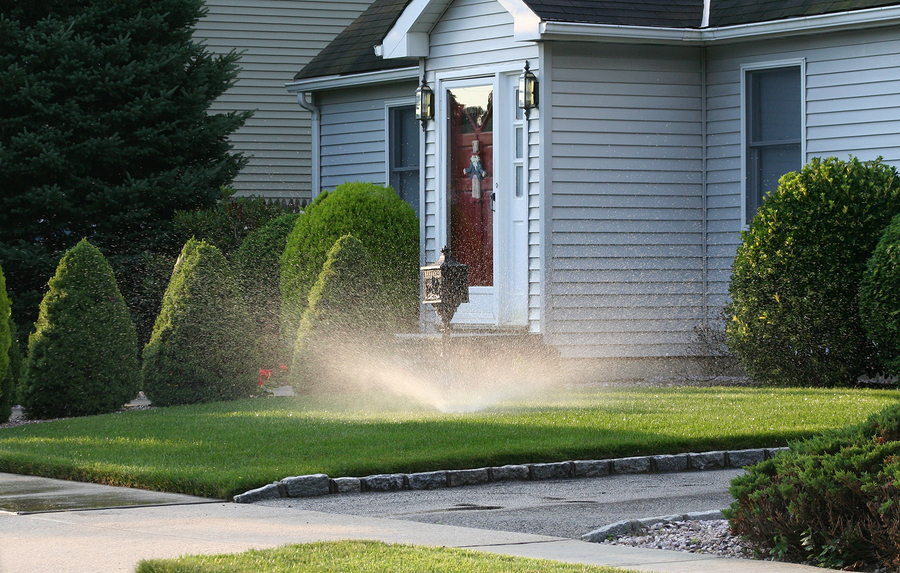
While nature’s capacity to produce water seems limitless, the Lincoln Water System’s (LWS) ability to deliver water to your home is not. In fact, the water you use is a carefully produced quality product which is clean and safe. Your water is piped directly to your home through an elaborate delivery system. During the summer when water use increases, LWS can deliver 80- 90 million gallons a day. When water use approaches or exceeds this level, individual water conservation decisions become important.
Be Water Wise Outdoors
Why Conserve?
Wise use of water is a good idea for many reasons. On a grand scale, it protects our environment and preserves this precious natural resource. On a personal level, it saves you money by reducing your water bill. As a community, water conservation will lengthen the life of Lincoln’s water delivery system because less stress is placed on the system.
Join the Lincoln Water Conservation Task Force in making Lincoln a water-wise community.
Ways to Conserve Water in Your Lawn
Over half the water we use in the summer goes to water our lawns and other thirsty plants. By watering efficiently in the landscape, you can help to keep the city’s water use within the system’s capacity and also reduce your summertime water bill. Lincoln’s Water Conservation Task Force offers 12 practical ways to keep your lawn green and conserve water, too.
Water Early
Water during the cool part of the day, to reduce evaporation. The best time to water your lawn is between Midnight and 8:00AM. Deep water shrubs and plant material in evening hours this is when plant uptake water for the next days transpiration.
Adjust Your Watering Schedule
The amount of water your lawn requires varies from week to week and month to month. Use your water percentage adjustment button change it each month to coincide with your lawns water requirements.
Know Your Plants’ Water Needs
Different plants and turf grasses require varying amounts of water. A healthy, growing bluegrass lawn will require about one-half inch of water per week in early May and one to two inches per week during the mid-summer months. Fescue turf will require one inch of water per week early spring (Late April to May) and an 1 1/2″ of water per week Mid June through Mid October. Adjust watering to include rainfall.
Measure Sprinkler Output
Measure your sprinkler output by placing sixteen or more cans (Tuna Cans) in various locations throughout a specific zone in the sprinkler pattern. Turn on your sprinkler for fifteen minutes. The average depth of water in the cans will tell you how much water the sprinkler zone has applied.
Water Efficiently
Use a sprinkler that throws large drops of water close to the ground. Sprinklers which throw mist or small droplets of water high in the air, result in excessive evaporation. Upgrade systems to pressure regulated sprinkler heads heads in high pressure situations.
Check Your Sprinkler Coverage
Make sure your sprinkler waters just the lawn. Water on sidewalks, driveways and streets is a waste. Avoid run-off by programing multiple start time on your controller instead of one large irrigation cycle try multiple cycles for the same run time ( instead of one cycle for 30min. try three 10min cycles. Avoid watering on windy days.
Adjust Your Sprinkler System
Underground automatic sprinkler systems should be adjusted to accommodate changes in seasonal water demand. Remember, they are semi-automatic and require periodic checks throughout the summer. If you have an automatic system, adjust the time clock as the temperature changes to give your plants only the amount of water they need to stay healthy. If you have a manual system, carefully watch a clock or set a kitchen timer.
Know Your Soil Type
Clay, Loam, and Sand all absorb and release water at different rates and also have different holding capacities. Check with you local Certified Irrigation Contractor or a Certified Landscape Irrigation Auditor to determine the schedule that is right for your lawn, landscape, and soil type.
Deep Soak Your Lawn
Water your lawn with several repeat cycles allowing the water to both penetrate and absorb into the soil. Deep soaking if done in stages allows for deeper root growth and a healthier lawn and landscape.
Aerate Your Lawn
Aeration loosens soil and reduces compaction. After aeration, more water will reach the roots, resulting in less run-off. Aerate your lawn once or twice a year.
Only Water When Your Lawn is Dry
Don’t water every day. Stick a screwdriver into the soil. If it offers little resistance to a depth of 6 inches, the soil has adequate moisture. Another simple test is to step on the grass. Grass will lie flat if the moisture is low. If the blades bounce back quickly, wait a day or two to water. Pay attention to the color of your lawn. When it is under stress it will change color, becoming more blue-green.
Plant Water Wise
While these tips are for lawns, you can save water outdoors by planting a water-conserving landscape. There are hundreds of low water use/drought tolerant plants, including turf grasses, which will thrive in Lincoln. Call the Cooperative Extension Office in Lancaster County for a brochure. Many Lincoln nurseries also have this information.
Rain/Moisture Sensors
Since 1 May, 2007 all irrigation systems installed in the City of Lincoln and Lancaster County require a rain/moisture sensor installed. A rain/moisture sensor is a adjustable device that will disable or interrupt your irrigation system automatic operation in the event on a natural rainfall. Older systems can easily be upgraded with this feature, contact your irrigation professional to assist you.